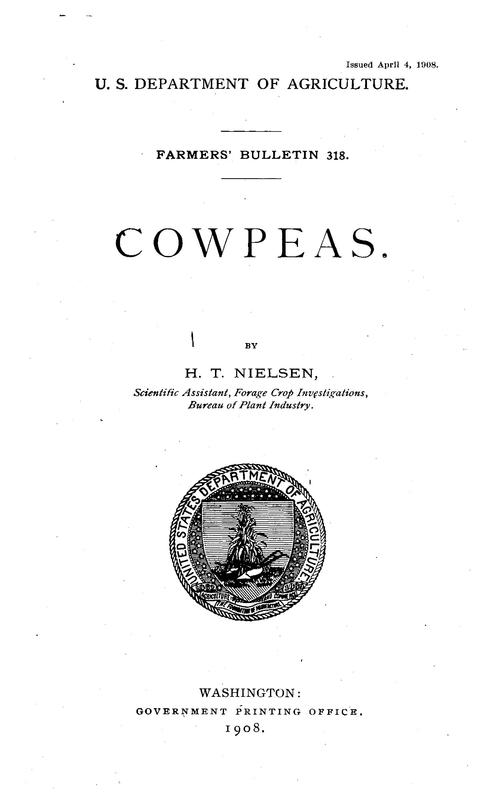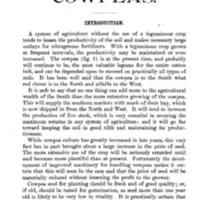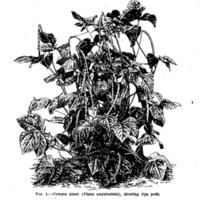Cowpeas
Creator
Date
1908
Excerpt
A system of agriculture without the use of a leguminous crop tends to lessen the productivity of the soil and makes necessary large outlays for nitrogenous fertilizers. With a leguminous crop grown at frequent intervals, the productivity may be maintained or even increased. The cowpea (fig. 1) is at the present time, and probably will continue to be, the most valuable legume for the entire cotton belt, and can be depended upon to succeed on practically all types of soils. It has been well said that the cowpea is to the South what red clover is to the North and alfalfa to the West.
It is safe to say that no one thing can add more to the agricultural wealth of the South than the more extensive growing of the cowpea. This will supply the southern markets with much of their hay, which is now shipped in from the North and West. It will tend to increase the production of live stock, which is very essential in securing the maximum returns in any system of agriculture; and it will go far toward keeping the soil in good tilth and maintaining its productiveness.
While cowpea culture has greatly increased in late years, this very fact has in part brought about a large increase in the price of seed. The more extensive use of the crop will be seriously retarded until seed becomes more plentiful than at present. Fortunately the development of improved machinery for handling cowpeas makes it certain that this will soon be the case and that the price of seed will be materially reduced without lessening the profit to the grower.
It is safe to say that no one thing can add more to the agricultural wealth of the South than the more extensive growing of the cowpea. This will supply the southern markets with much of their hay, which is now shipped in from the North and West. It will tend to increase the production of live stock, which is very essential in securing the maximum returns in any system of agriculture; and it will go far toward keeping the soil in good tilth and maintaining its productiveness.
While cowpea culture has greatly increased in late years, this very fact has in part brought about a large increase in the price of seed. The more extensive use of the crop will be seriously retarded until seed becomes more plentiful than at present. Fortunately the development of improved machinery for handling cowpeas makes it certain that this will soon be the case and that the price of seed will be materially reduced without lessening the profit to the grower.
Title
Cowpeas
File(s)
Cowpeas 1908 cover.jpg
(image/jpeg)
Cowpeas 1908 TOC.jpg
(image/jpeg)
Cowpeas 1908 Introduction.jpg
(image/jpeg)
Cowpeas 1908 1.jpg
(image/jpeg)
 An official website of the United States government.
An official website of the United States government.





